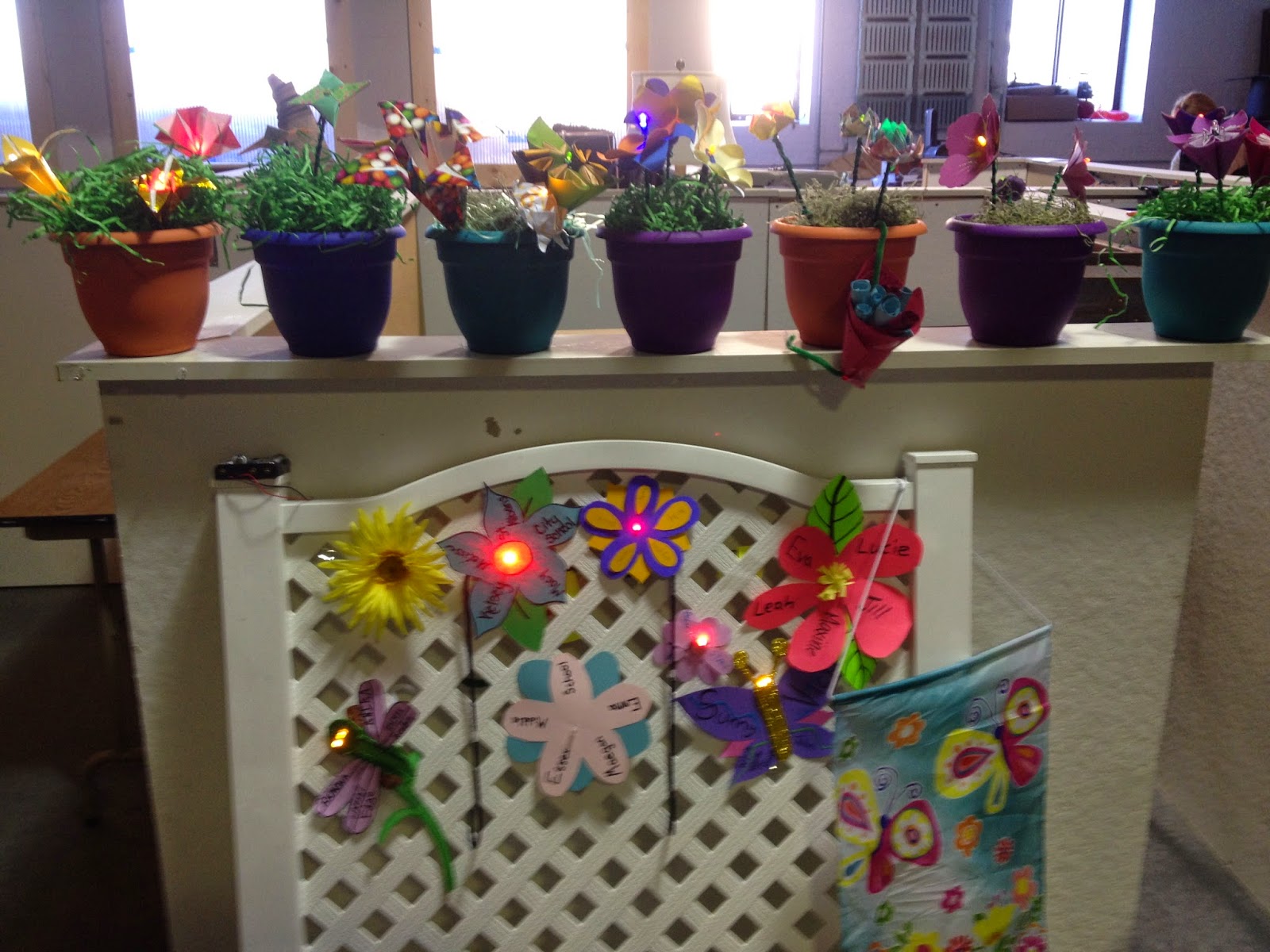On 24 March, 21 participants from seven Vermont schools converged upon the Burlington Generator maker space to usher in the arrival of spring. Lucie deLabruere, Leah Joly, and Jill Dawson orchestrated the day's events, aided by the leadership of Maxine Breuer, a senior from Essex High School, and Eva Joly, a middle school maker. To learn more, or to check out additional photos from the day, visit
http://www.girlsmakeit.org.

Inspired by
MIT's robotic flower garden, Lucie devised a way to introduce girls to coding by turning a frenzy of handmade flowers into artistic arrangements of blinking and fading buds.
Teams met design challenges, wiring up their flowers and connecting them to Lily Pad microprocessors, to control each flower's behavior. By the end of the day, each team created a portable floral arrangement to take back to their schools and contributed one flower to a community garden, which will be displayed at the
Generator's birthday bash later this week.
HERE'S WHAT WORKED:
Like the previous event, having teams work together to solve problems was a good approach.
Because we asked each team to bring two flower tops with them, we were able to spend more time focusing on the coding and circuitry than we would have, had each team constructed all of their flower tops on site. This approach also resulted in quite a variety of hand-made blossoms.
Participants brought their own lunches this time, which kept costs down.
Prominently posting the wifi code and email address to the Girl's Make It blog encouraged teams to share their progress and achievements with the community.
Having two student mentors helping out was fantastic!
Teams were very invested in making their take-away projects beautiful (and blingy).
We were flexible, based upon the energy and interests of our group; our pacing felt more natural than it might have, had we tried to pack more into the day.
 WHAT MAY BE IMPROVED UPON:
WHAT MAY BE IMPROVED UPON:
As could be expected, it took some time to get every computer up and running with Arduino. We also encountered issues with a faulty cord that caused the LEDs in one arrangement to burn out.
We had planned to review circuits prior to having the teams wire up their flowers, but we ended up having them jump right in. As a result, some flowers took longer to function properly. Doing the review first, to explicitly tap into the girls' prior knowledge, would have been a good thing to have done.
Having a set of wire strippers would have been helpful. The scissors worked, but wire strippers would have given the girls experience using a tool meant for that specific purpose.
We didn't anticipate that we'd have a shortage of alligator clips.
.jpg)





.png)







